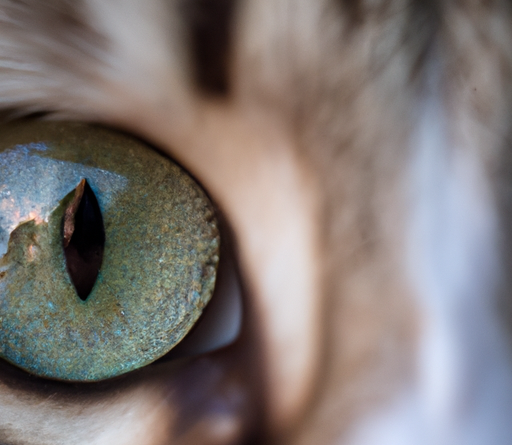
Have you ever wondered if your fluffy feline friend can sense your emotions? It turns out, there might be more to that purring ball of fur than meets the eye. Recent studies have suggested that cats have an uncanny ability to pick up on human emotions, whether it’s happiness, sadness, or even stress. This fascinating article delves into the science behind this remarkable phenomenon and explores how our beloved cats may just have a sixth sense when it comes to understanding our emotional states. So, next time you’re feeling down, don’t be surprised if your cat curls up beside you, seemingly offering their comforting presence.
Table of Contents
Understanding Feline Perception
Cats are fascinating creatures with unique sensory abilities. Their acute senses enable them to perceive the world in ways that are different from humans. Understanding the way cats perceive emotions, both in themselves and in humans, can deepen our understanding of these enigmatic animals.
Cats’ Acute Sensory Abilities
Cats possess exceptional sensory acuity, which contributes to their ability to perceive emotions. Their sense of hearing is highly developed, allowing them to detect subtle changes in tone and vocalizations. Similarly, their sense of smell is remarkable, and they can pick up on various scents associated with different emotional states. Furthermore, cats have excellent night vision, allowing them to observe and interpret facial expressions and body language even in low light situations.
A Cat’s Sense of Emotion in Humans
Cats have the remarkable ability to sense and respond to human emotions. While scientists are still unraveling the mechanisms behind this phenomenon, anecdotal evidence and scientific studies suggest that cats can detect emotional states in humans accurately. They seem to have an instinctive understanding of joy, sadness, anxiety, and other emotions.
Recognizing Human Emotions
Cats’ ability to detect emotional states in humans has been observed and documented by researchers and cat owners alike. By paying close attention to their owners’ facial expressions, body language, and vocalizations, cats can interpret and respond to their emotional cues.
Observing Facial Expressions and Body Language
Cats are highly perceptive animals that carefully observe human facial expressions and body language. They can detect subtle changes in expressions and movements associated with various emotions. For example, when their owners are happy, cats may approach them with a relaxed body posture and may even purr. On the other hand, when their owners are upset or anxious, cats may exhibit behaviors such as curling up next to them or gently rubbing against their legs, seemingly offering comfort and reassurance.

Cats as Empathetic Companions
Growing evidence suggests that cats possess a sense of empathy towards their human companions. This empathy goes beyond merely sensing emotions and involves an emotional bond that develops between cats and their owners.
Feline Empathy Towards Humans
Numerous cat owners have experienced moments when their cats demonstrate empathy towards them during times of distress or sadness. Cats have been known to provide comfort and companionship by snuggling up to their owners or purring, a behavior that is associated with relaxation and contentment. They seem to have an innate ability to detect when their humans need emotional support, and they’re often ready to offer a listening ear, or in the feline case, a comforting presence.
Cats’ Emotional Bond with their Owners
The emotional bond between cats and their owners can be incredibly strong. Cats are known for their independence, but this does not prevent them from forming deep connections with the humans they share their lives with. This emotional bond can be mutually beneficial, providing a sense of companionship and emotional support for both the cat and the owner.
Physiological Responses in Cats
When cats sense emotional changes in their human companions, they can exhibit physiological responses themselves. These responses can manifest as changes in behavior and body language, reflecting their awareness of the emotional states of humans.
Changes in Behavior and Body Language
Cats may display various behaviors when they perceive emotional changes in their humans. They may become more affectionate, seeking physical contact through rubbing against their owners or gently nudging them. Alternatively, they might show heightened vigilance or even exhibit stress-related behaviors if they sense their owners’ anxiety or fear. Changes in body language, such as flattened ears, an arched back, or a puffed-up tail, may also indicate their awareness of emotional states.
Influence of Human Emotional States on Cats
It is important to note that while cats can sense human emotions, their own emotional experiences are distinct. Cats may respond to their owners’ emotional states, but they do not necessarily share the same emotions. However, the bond between cats and humans can result in a reciprocal relationship, where the emotional well-being of one can indirectly affect the other.
Scientific Studies and Findings
Scientific research has provided valuable insights into the cat-human emotional connection and further supports the notion that cats can perceive and respond to human emotions.
Research on Cat-Human Emotional Connection
Numerous studies have explored the emotional connection between cats and humans. These studies have used various methodologies, including observation of behavior and physiological measurements, to examine the impact of human emotions on cats. The results consistently indicate that cats can detect and respond to emotional cues from their human companions.
Studies Confirming Cats’ Emotional Awareness in Humans
Research has shown that cats’ social intelligence extends to their understanding of human emotions. For instance, a study published in the journal “Animal Cognition” found that cats were more likely to approach their owners when the owners displayed positive emotions compared to neutral or negative emotions. This suggests that cats have the ability to differentiate between different emotional states in humans.
Empirical Evidence and Anecdotal Observations
In addition to scientific studies, cat owners’ personal experiences provide valuable insights into the emotional perception of cats.
Personal Experiences of Cat Owners
Many cat owners have shared heartwarming stories of their feline companions demonstrating emotional awareness and empathy. From offering solace during difficult times to providing unconditional love and support, cats have proven to be intuitive and empathetic companions.
Testimonials Supporting Cats’ Emotional Perception
Various testimonials from individuals who suffer from emotional distress have highlighted the positive impact that cats can have on their well-being. People have reported that their cats can sense their emotional fluctuations and offer comfort and companionship, providing a much-needed emotional outlet.

Nonverbal Communication Cues
Cats rely heavily on nonverbal cues to communicate their own emotions and understand the emotions of those around them. Learning to interpret these cues can enhance the bond between cats and humans.
Interpreting Vocalizations
Cat vocalizations, such as meowing, purring, and hissing, can convey different emotions. Purring, for example, is often associated with contentment and relaxation, whereas hissing can signify fear or aggression. By paying attention to the context and accompanying body language, we can better understand what cats are trying to communicate.
Understanding Specific Cat Gestures
Cats use a wide range of body language and gestures to express their emotions. Tail position, ear positioning, and body posture can all provide valuable insights into a cat’s emotional state. Learning to interpret these gestures can help humans better respond to their cats’ needs and understand their emotions.
Cats’ Therapeutic Benefits
Beyond their ability to perceive human emotions, cats have been recognized for their therapeutic benefits to individuals with emotional needs.
Supporting Individuals with Emotional Needs
Cats can offer tremendous support to individuals dealing with emotional challenges. Their calming presence and ability to sense emotional distress can provide a sense of comfort and reduce feelings of isolation. Cats have been utilized as therapy animals in various settings, including hospitals and nursing homes, where their presence has had a positive impact on patients’ emotional well-being.
Cats’ Role in Stress Reduction and Emotional Well-being
Spending time with cats has been shown to reduce stress levels and promote emotional well-being. The act of petting a cat, for example, can release oxytocin, a hormone associated with bonding and relaxation. This physiological response can help alleviate symptoms of anxiety and promote a sense of calm and happiness.
Limitations and Individual Differences
While cats’ ability to perceive emotions in humans is well-documented, it is important to recognize that individual cats may exhibit variations in their behaviors and responses.
Variations in Cat Behavior and Responses
Just like humans, cats have unique personalities and temperaments that influence their ability to perceive and respond to emotions. Some cats may be more attuned to their owners’ emotional states, while others may be less responsive. Similarly, past experiences, socialization, and individual differences can also play a role in shaping a cat’s emotional perception.
Factors Influencing Emotional Perception in Cats
Various factors can influence a cat’s ability to perceive emotions, including their relationship with their owners, the environment they are in, and their overall well-being. Cats that have been socialized and have positive experiences with humans from a young age may be more likely to exhibit emotional intelligence in their interactions.
Ethical Considerations and Best Practices
To foster positive interactions with cats and respect their emotional perception, it is important to consider ethical considerations and adhere to best practices.
Promoting Positive Interactions with Cats
Respecting a cat’s personal space and boundaries is crucial in promoting positive interactions. Approaching a cat gently and allowing them to initiate physical contact can help build trust and strengthen the emotional bond between humans and cats. Being mindful of their comfort and avoiding actions that may cause distress or fear is essential to maintaining a healthy relationship.
Respecting Cats’ Personal Space and Boundaries
Understanding that cats need alone time and respecting their need for personal space is vital. Overwhelming cats with constant attention or invading their personal space can lead to stress and anxiety. Allowing cats to have designated safe spaces where they can retreat when they need privacy or solitude is essential for their emotional well-being.
In conclusion, cats possess remarkable abilities to perceive and respond to human emotions. Their acute senses, coupled with their empathetic nature, enable them to detect and interpret emotional cues exhibited by their human companions. By understanding and respecting cats’ emotional perception, we can foster a deeper bond with these captivating creatures and enhance our own emotional well-being in the process.

